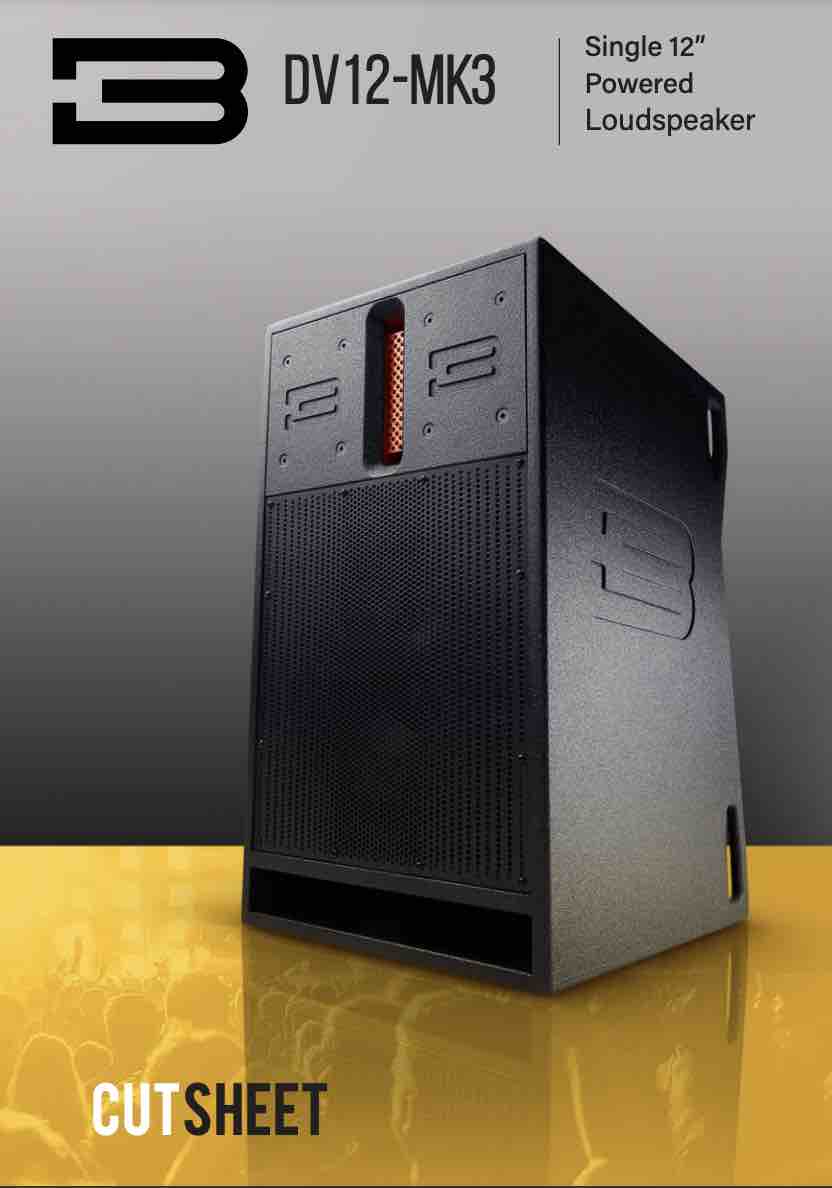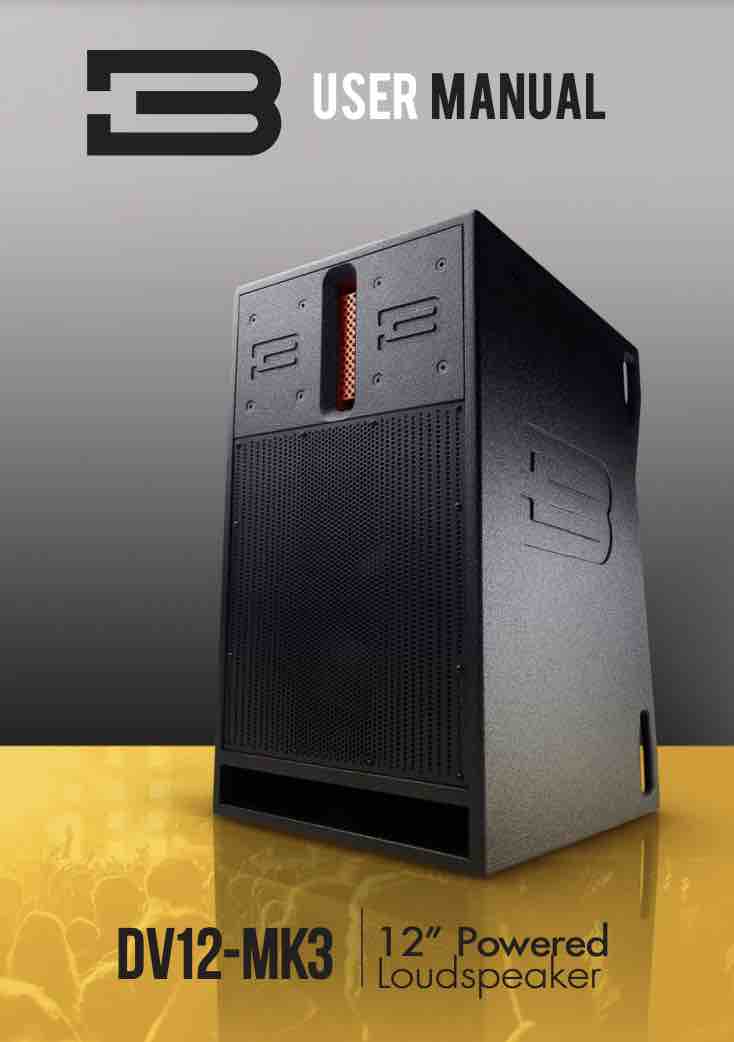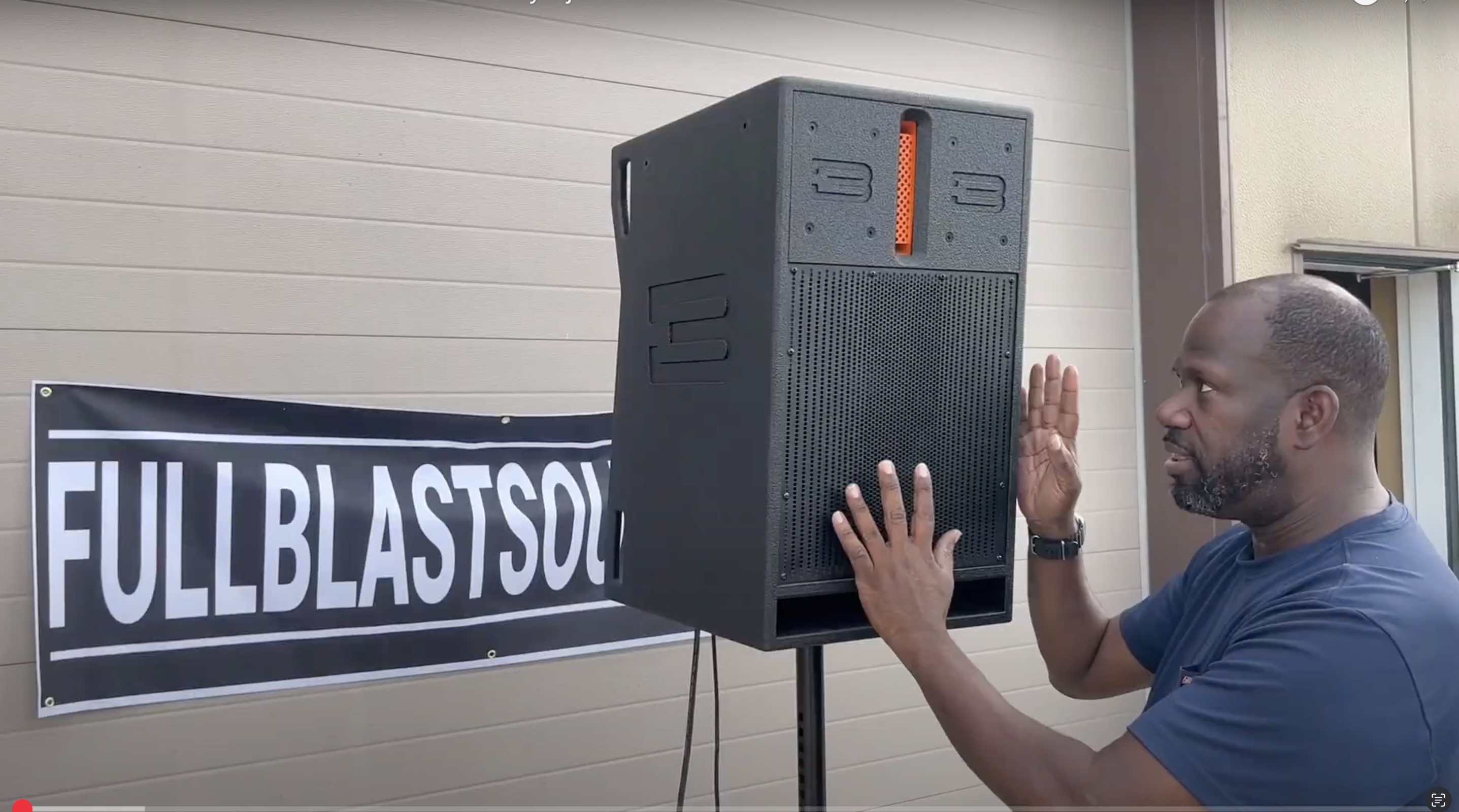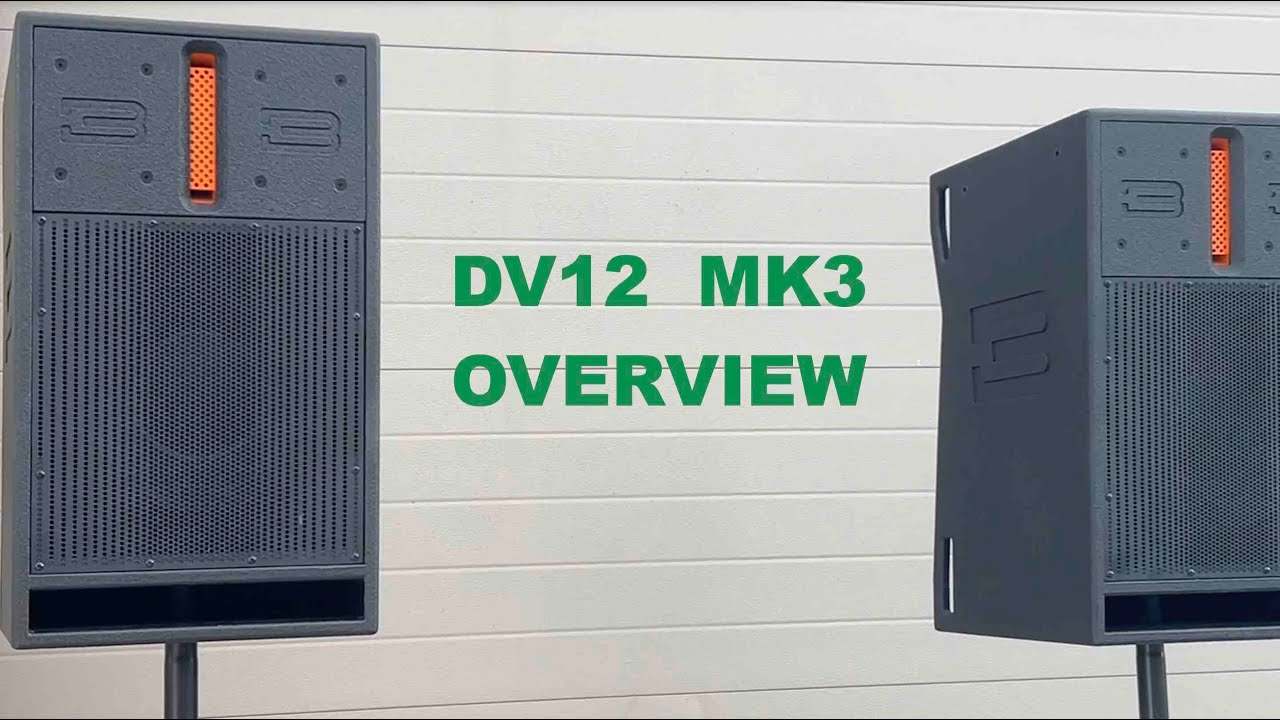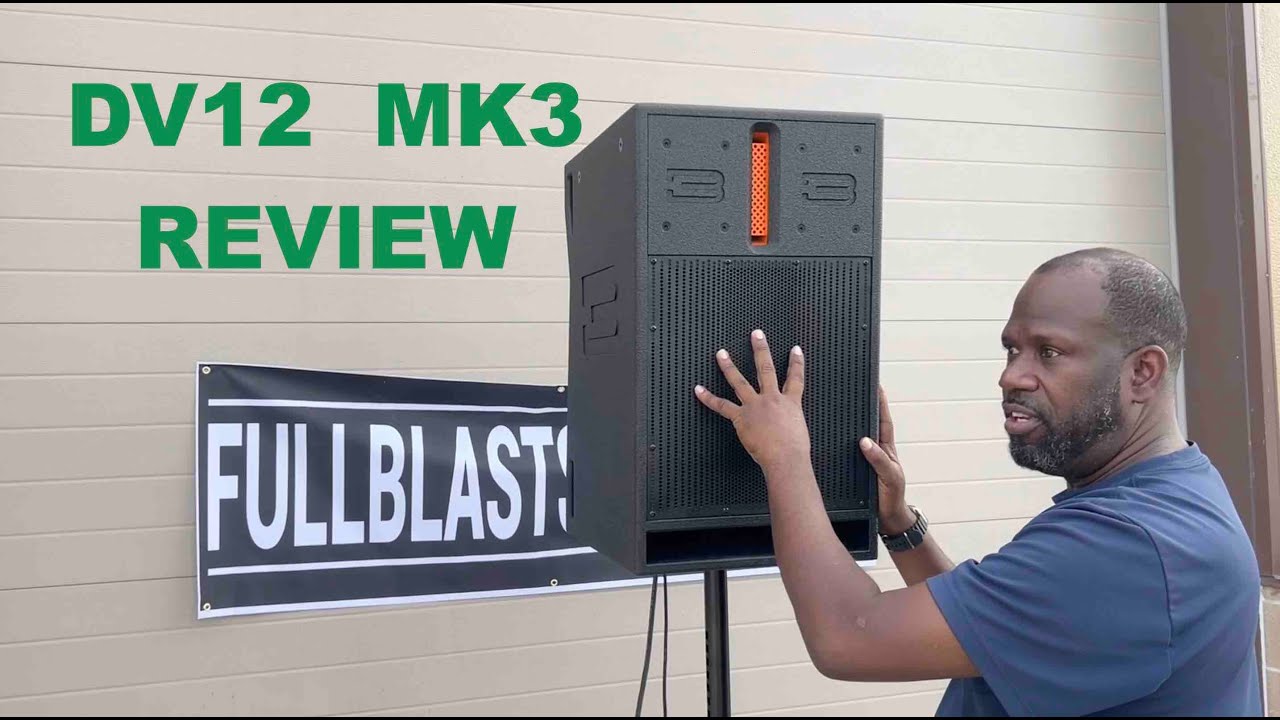All about the DV12 MK3 3200 Watt
What is the minimum width the DV12 speakers should be distanced from one another, and will being too close cause interference?
The minimum width between a left and a right speaker is, in effect, the width between two ears, like headphones. The next point about minimum distance is about how many people can listen to both speakers. If the speakers are too close together, very few people will be able to experience “stereo”. People to the left of the left speaker and people to the right of the right speaker won’t get much benefit from the use of 2 speakers.
Comb filtering is another issue altogether, and the issue isn’t really applicable to stereo pairs. Comb filtering does occur with stereo pairs but it’s less noticeable because the brain isn’t processing the two inputs trying to determine what frequencies are missing. Specifically, different frequencies are missing from the input to each ear, so the other ear can fill in the blanks.
Comb filtering occurs when there are two sources of the same information, but stereo sources do not contain exactly the same information, and our brains process the information differently.
The information contained in the sound arriving first at the left ear and then at the right ear is compared to the information arriving first at the right ear and then at the left ear. If there is no difference between the two sets of information, the brain cannot determine location, and so the location is assumed to be center.
If the listener is closer to one side than the other, more, if not most, elements will seem to be arriving from the nearer side.
Comb filtering is worst, aka most noticeable, when two adjacent sources are producing identical output. In the absence of another, different or more distant source, the brain is able to recognize when frequencies drop out because they drop out dramatically, not slightly, and often they drop out from both ears.
Back to the point, as long as the two speakers are on opposite sides of your head, and playing different (aka stereo) signals, comb filtering is not going to be a noticeable issue.
Comb filtering becomes an issue when two speakers are playing the same signal and are at different distances from only one of your ears, aka on the same side of your head, (or one measurement microphone.)
The nulled frequency is more completely nulled if the difference in level is minimal, which is the case when the two speakers are very close together. The nulled frequency is a function of the wavelength as compared to the difference in distance from one source to the other. The null will occur where one source is farther from the listener by half the wavelength of that frequency.
The short version: Use one left speaker and one right speaker and try to fit the audience between them.
The coverage angles are largely irrelevant in this scenario. The coverage angles and their effect on comb filtering are of greatest concern when arraying multiple speakers.
Moving the speakers closer together will move that point closer. With cabinets 3 meters apart, the intersection point is about 1 meter in front of the cabinets. Having the speakers less than 10 feet apart isn’t a problem, it just moves the intersection point closer. If the worry is about feedback, the idea is that the mics should be behind the speakers.
Notes on Performance from David Lee
There are always what one might call "practical limitations" to speakers. The DV12 and the SV9 are not subwoofers. They can produce a fair amount of bass, but the woofers also plays midrange, which all woofers do more easily and efficiently than they make bass. To put that another way, for the same amount of power input, any woofer will make much more midrange than bass. Most people listening to dance music want more bass than midrange, which is what necessitates subwoofers.
To give an idea of how much the demand for bass is above midrange, and the relative ease with which midrange can be made, the ratio can be as high as 4:1 of subwoofers to tops. Trying to get a level of bass that's close to what's desired in modern music from a single 12" or single 9" top cabinet is going to push that top's driver past its limits.
Two high-powered 12" tops could be used with 6 or 8 single 18" subwoofers and the tops would easily keep up. They will definitely "outrun" a single 15" sub. If the DV12 or SV9 cabinet is being run in full-range mode with heavy bass music, it may be that it's giving all it can and that's the limit. In this case, the speaker will make a popping sound, indicating that it has exceeded its performance abilities and should be turned down, and ideally paired with a subwoofer (or two).
This issue is only present in the absence of sufficient bass output, so providing the system with sufficient low-frequency output for your genres and output needs will fix this problem.
Being that the MFLA is rated to sustain 136dB, would invert-arraying a pair of DV12's get me to 136dB from 126dB as a non arrayed DV12? Would arraying 2 MFLA cabinets together add 10dB and would adding 2 more MFLAs effectively double the volume once again?
Arraying a pair of speakers ordinarily results in an increase of 6dB if their output is coherent, which an array of DV12s, an array of MFLAs and an array of most subs would be. An array of 2 "point-source" speakers (such as AT212s, DiaMons, AT312s and most other non-line-array speakers in the world) would result in a 6dB increase at low frequencies, where the output would be coherent, and an increase of only 3dB where their output would tend to be incoherent, in other words, where their outputs would begin interfering with each other. (aka comb-filtering.)
The woofers in the MFLA are more efficient than the woofers in the DV12, so they can sustain a higher SPL. Two DV12s would get you to 132dB. (The low-frequency drivers are usually the limiting factor in the output SPL, which is why some manufacturers claim such high SPL capabilities for their line-arrays and tops: They measure the maximum SPL that the tweeter can provide, or at 1kHz, where both woofers and tweeters are contributing, without considering that if the woofer(s) can't keep up at the bottom end, the sound character changes and the result doesn't sound good at all.)
Is DV12 low-level background noise with no music playing normal?
For the most part, it is normal. In louder environments, it's not noticeable. At a party or event, it won't be noticed. When high-gain electronics are connected to high-sensitivity loudspeakers, sometimes the lowest level of the amplifier's output, it's "idle level" is audible because the speaker is very sensitive. The reason it's audible from the horn and not from the woofer is because the horn is much more sensitive than the woofer. The same amount of millivolts are going to both drivers but the compression driver and horn are much more efficient at converting those millivolts into sound pressure.
There is a maximum dynamic range between the lowest level an electronic circuit produces and the highest level it can produce. For pro-audio gear this is usually in the range of 110-115dB. The output of one of those horns is ~115dB with 1W @1 meter. The amplifier channel can produce 1500 watts. Essentially the horn can produce 62dB from only 0.01 millivolt. We make compromises in order to get loud, and that compromise could be the inability to get perfectly quiet.
It may be possible to make it a little less noticeable in quiet spaces, and this would also improve sound quality anywhere you would take them... (This is what everyone should be doing anyway, but it's particularly relevant here...) Try turning down the input level on the cabinet. First, turn it all the way down and see if the noise is reduced. If it is, then we're making progress. Next, put some music through your mixer and bring the mixer's output level up until it's at 98% of maximum. Yes, really high. Now, bring the level on your speakers up just enough to reach the maximum sound level you'll want in the room. With that done, you'll no longer be amplifying background noise for no reason. You won't be amplifying background noise from any source, amp, mixer or whatever. Your mixer won't struggle to produce enough output to play the speakers as loud as you want. Mixers have way more output than you need and they tend to sound better when they are delivering more output rather than less.


